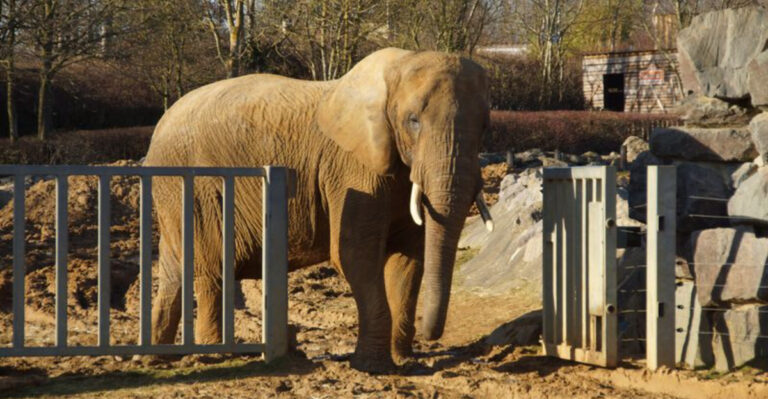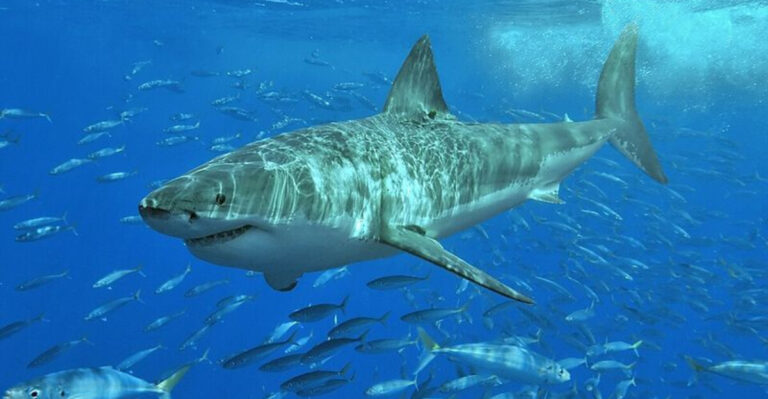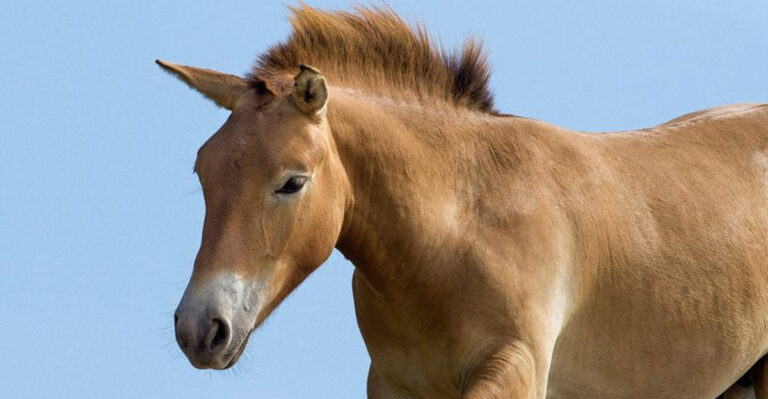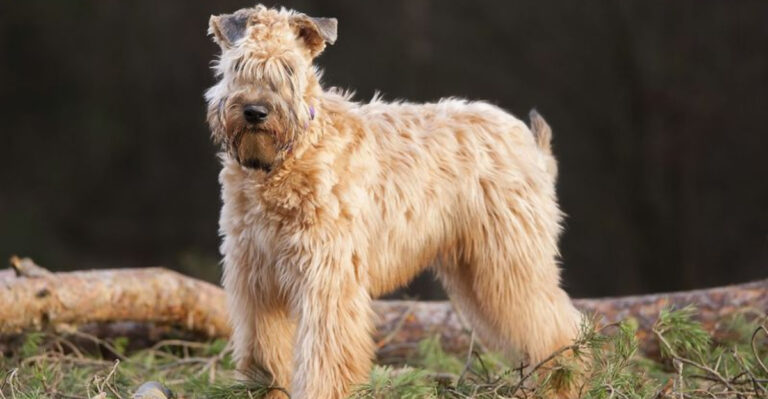17 Silent Predators Of The Jungle You’ll Never Hear Coming
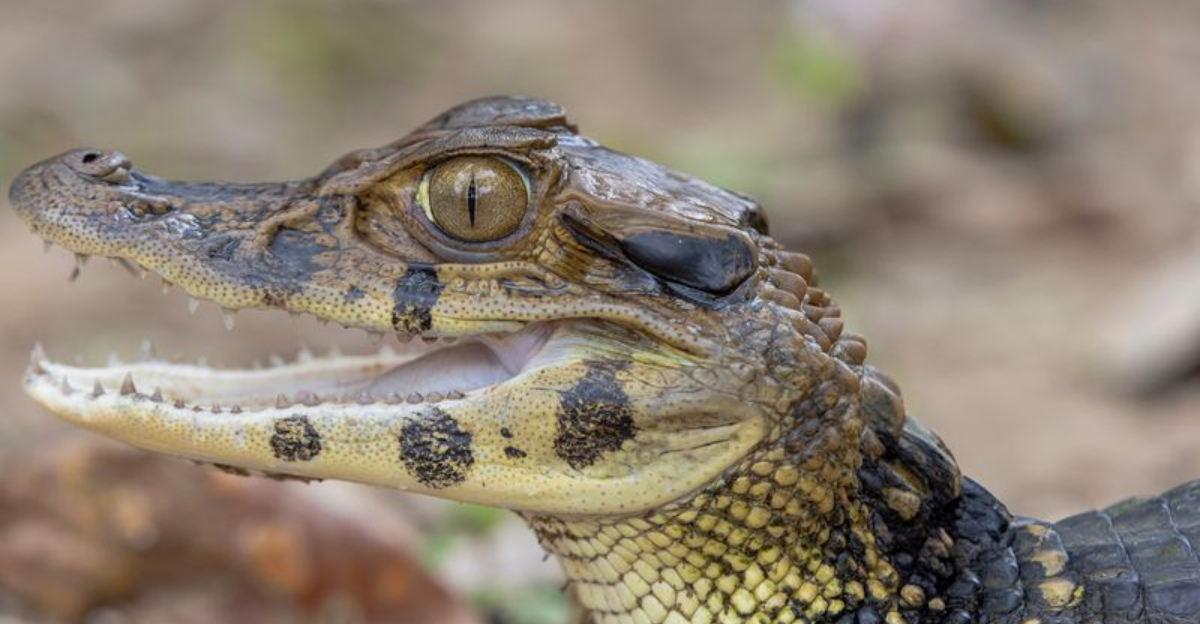
In the bustling jungle, where every sound has its place, there are predators who defy the noise with their silence.
These stealthy hunters move with unmatched grace, relying on patience and precision to capture their prey without a sound.
Often unnoticed, their quiet approach is their greatest weapon. In this post, we explore the lives of these elusive creatures, uncovering the secrets behind their silent hunting methods.
1. Red-Eyed Tree Frog
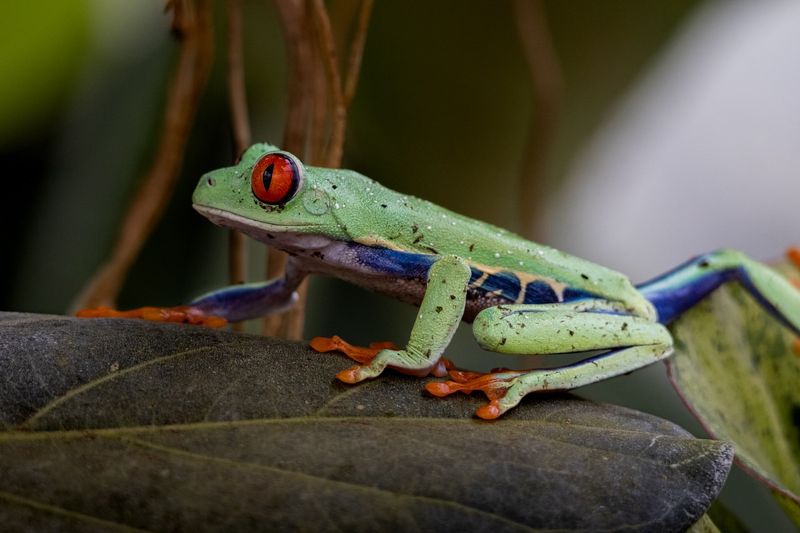
The red-eyed tree frog, with its vivid red eyes and bright green body, is a small yet effective predator in the jungle.
Found in the rainforests of Central America, this amphibian relies on stealth and precision in its hunting approach.
It feeds primarily on insects, using its sticky tongue with remarkable accuracy to catch prey. By remaining motionless on leaves and using quick reflexes, it can ambush prey without being detected.
The frog’s silent movements and camouflage, combined with its nocturnal habits, make it a master of stealth, ensuring its survival in the jungle’s competitive ecosystem.
2. Forest Cobra
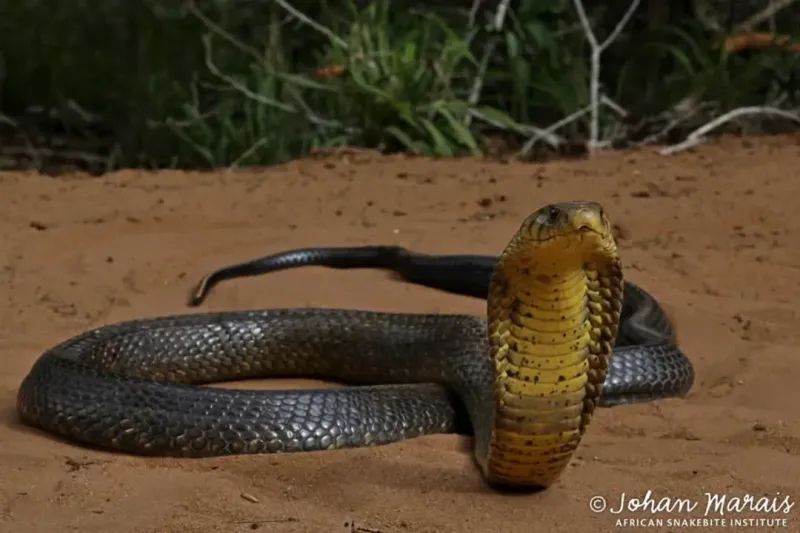
Amidst the vibrant tapestry of jungle life, the forest cobra glides silently, an apex predator in its realm.
With scales that mimic the lush foliage, it moves with an elegance that belies its lethal power. Its hood, rarely seen, is a spectacle of nature’s design, yet it’s not the cobra’s most dangerous trait.
In the jungle’s embrace, it senses vibrations, detecting its prey with uncanny accuracy. The forest cobra strikes with precision, injecting venom that subdues its victim in moments. This snake’s silent approach and swift attack make it a formidable hunter, feared by many.
3. Puma
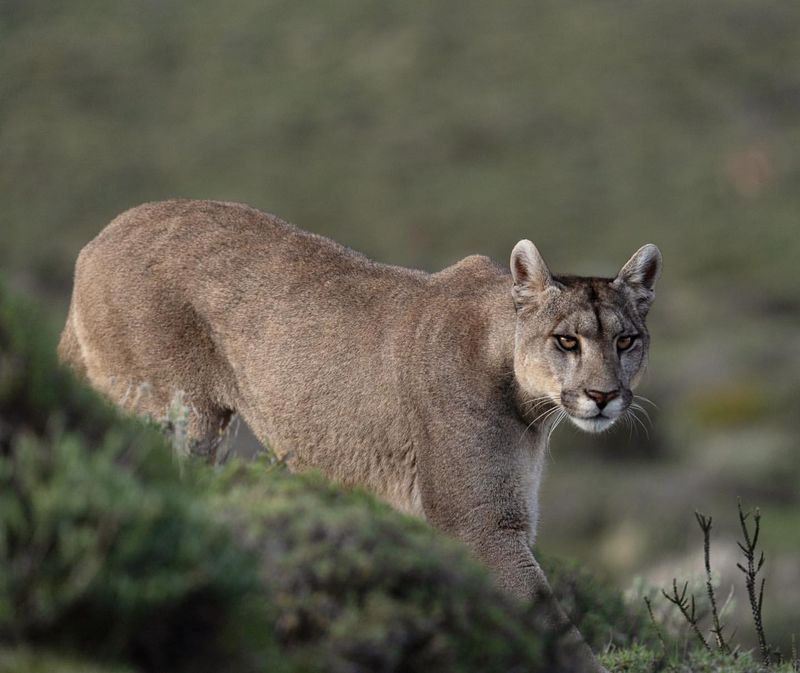
The puma, also known as the cougar or mountain lion, is a stealthy and powerful predator that thrives across the Americas.
With a tawny coat that blends perfectly into its surroundings, it silently stalks its prey, moving with calculated grace.
Hunting at dawn or dusk, the puma uses low light to stay undetected, ready to spring into action with explosive speed.
A leap, a swipe, or a swift bite is all it takes to bring down its target. This combination of silence, strength, and agility makes the puma a top predator, ruling its environment with precision.
4. Clouded Leopard
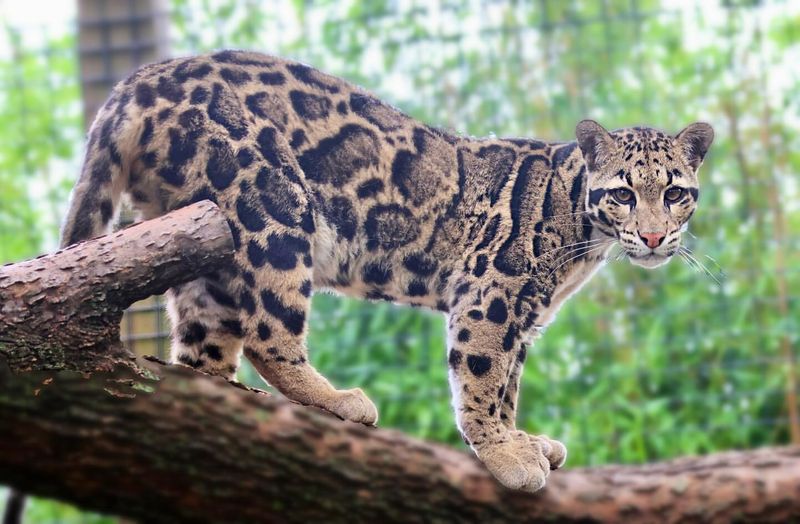
The clouded leopard, with its distinctive cloud-like spots, is a master of the trees, found in the forests of Southeast Asia.
Agile and skilled at climbing, it effortlessly moves through the canopy, using its powerful legs and rotating ankles to descend headfirst and leap from branch to branch.
This stealthy cat hunts by silently stalking its prey, blending seamlessly with the foliage to stay hidden.
With its keen senses, the clouded leopard can detect the faintest movements, ensuring a precise and swift pounce.
Its combination of agility, stealth, and power makes it a formidable predator, thriving in its arboreal environment.
5. Green Anaconda
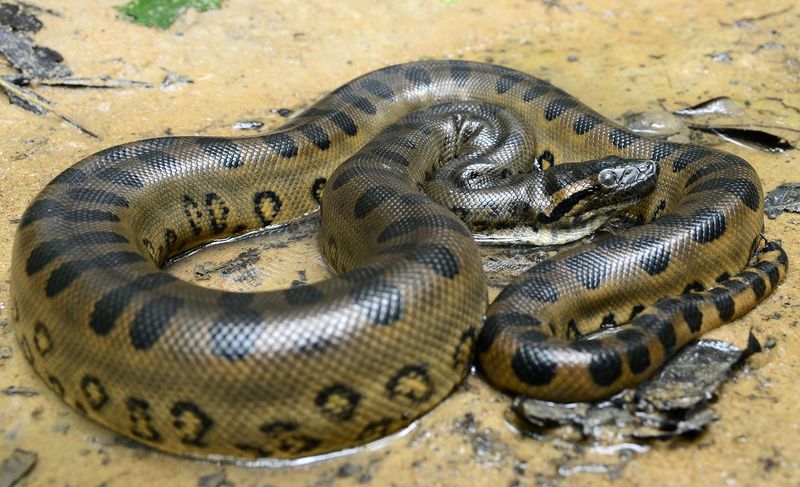
The green anaconda, the world’s heaviest snake, is a true master of ambush in the waterways of the Amazon Basin.
Using the murky water and its green and black patterned skin for camouflage, it silently approaches prey, blending seamlessly with its surroundings.
Patient and stealthy, the anaconda can lie in wait for hours or even days, relying on surprise to strike with lightning speed from beneath the water’s surface.
Once it captures its prey, the anaconda uses its powerful coils to constrict and suffocate.
This incredible snake can take down large animals like capybaras and caimans, showcasing its strength and silent menace as one of the jungle’s most formidable predators.
6. Ocelot
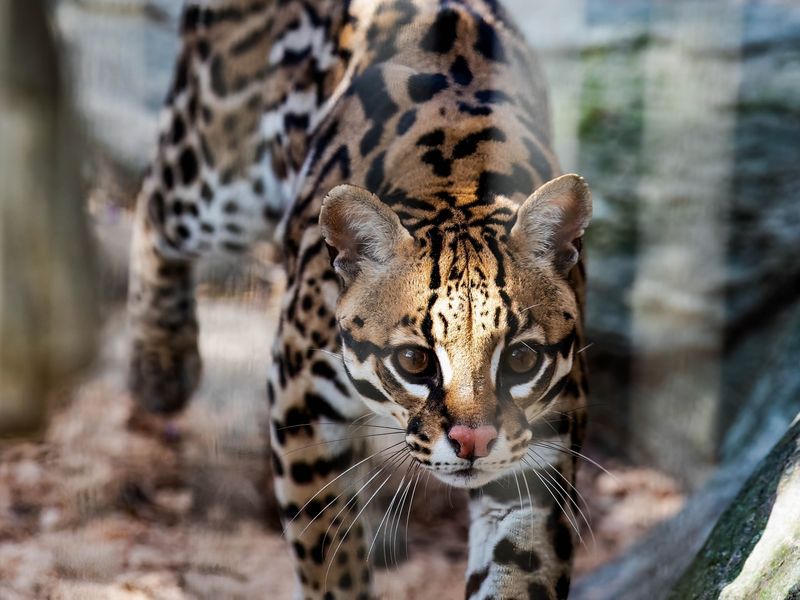
The ocelot, a small wild cat native to the Americas, is a nocturnal hunter with striking patterns that help it blend into its surroundings.
Its beautifully camouflaged coat and silent movements make it a master of stealth as it stalks prey under the cover of night.
Solitary and agile, the ocelot relies on its keen senses to hunt small mammals, birds, and reptiles, moving with fluid grace to remain undetected.
Once it locks onto its target, it uses powerful hind legs to leap, delivering a swift, precise attack.
This quiet approach not only ensures hunting success but also helps the ocelot avoid larger predators, making it a true survivor in the jungle.
7. King Cobra
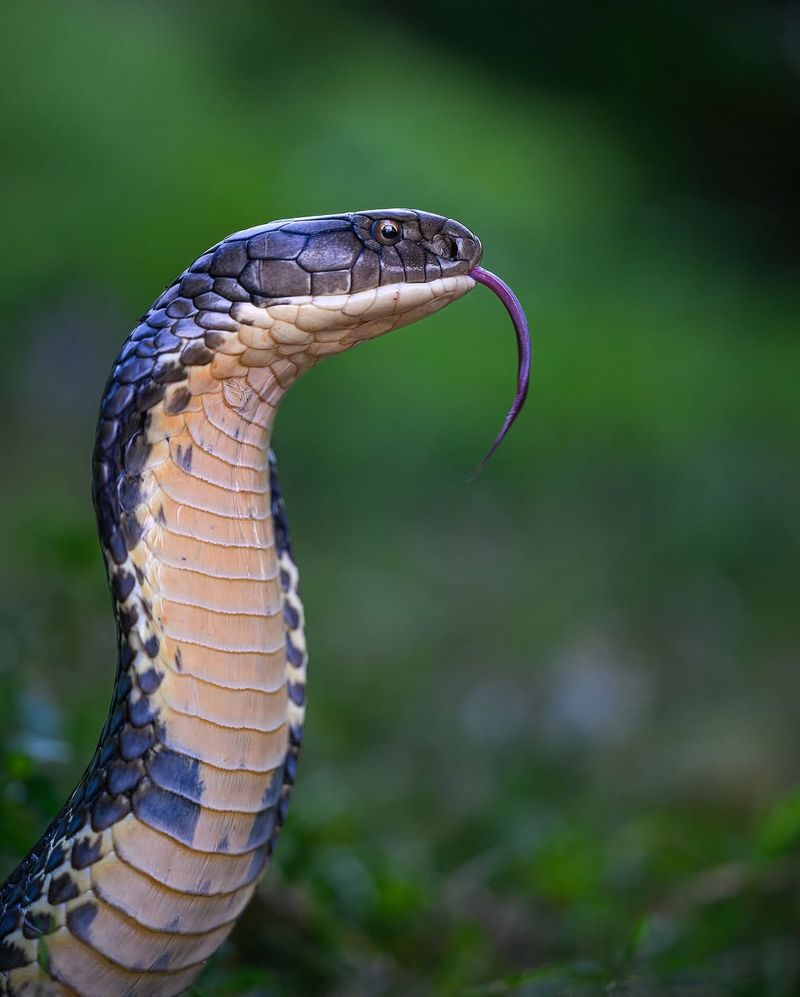
The King Cobra, renowned for its majesty, slithers through the jungle with a grace unmatched by other serpents.
This formidable predator, reaching up to 18 feet, is the world’s longest venomous snake.
Despite its size, it glides silently through the undergrowth, its scales whispering against leaves.
Equipped with keen eyesight, it can detect movement from afar, allowing it to track prey with precision.
When threatened, the King Cobra raises its hood, a menacing display that deters potential threats. It’s a solitary creature, embodying the true essence of stealth and power.
8. Amazonian Maned Wolf
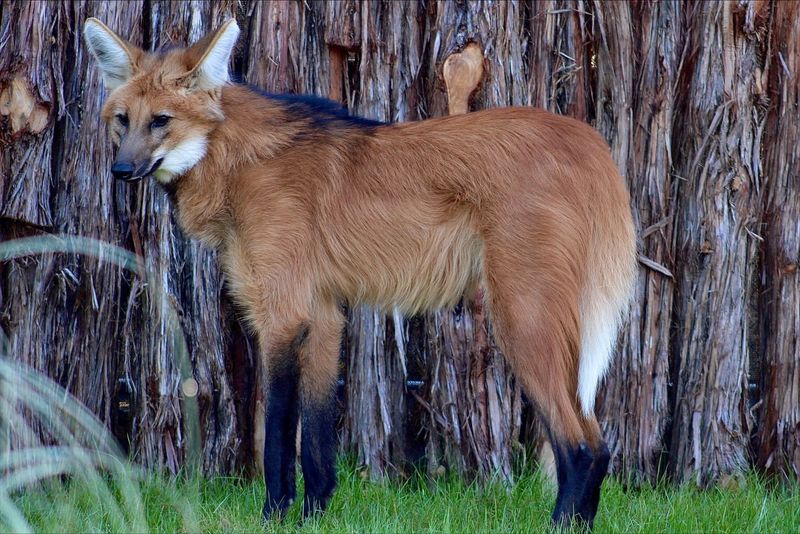
The Amazonian maned wolf, despite its name, is a unique canid native to South America, known for its long legs and distinctive mane.
Though not a direct predator like big cats, it is an opportunistic hunter that moves quietly through the dense jungle.
The maned wolf’s diet includes small mammals, birds, and even fruits, and it uses its keen senses and stealth to surprise its prey.
Its elongated limbs help it navigate tall grass and dense underbrush, staying hidden from both prey and predators.
With acute hearing and a stealthy approach, the Amazonian maned wolf thrives in various habitats, showcasing its adaptability in the wild.
9. Margay
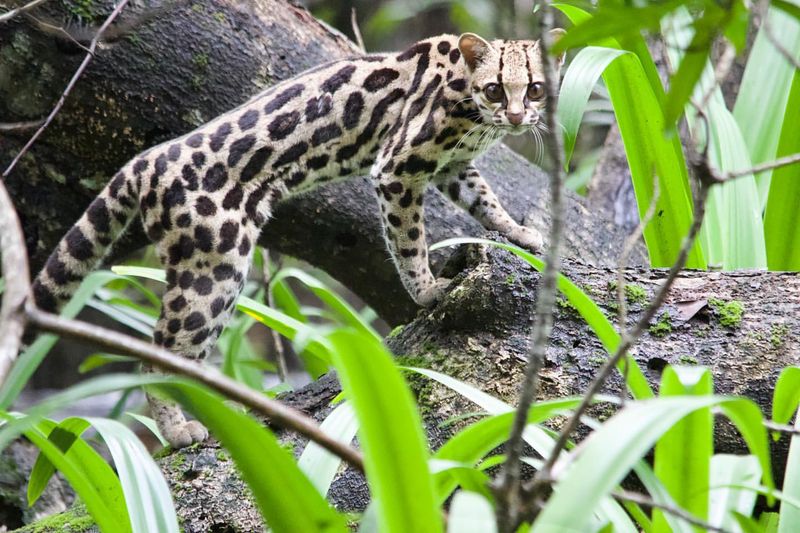
The margay, a small wild cat native to Central and South America, is an agile and stealthy arboreal predator.
Resembling the ocelot but smaller, the margay spends most of its life in the trees, where its ability to move silently through the canopy is a key adaptation.
With a flexible body, long tail for balance, and large eyes for night vision, the margay can hunt small mammals, birds, and reptiles with ease.
Its quiet approach is enhanced by soft-footed movement, allowing it to remain undetected by prey and predators alike.
As a nocturnal hunter, the margay’s stealthy technique is essential for both capturing food and avoiding danger in the jungle.
10. Harpy Eagle
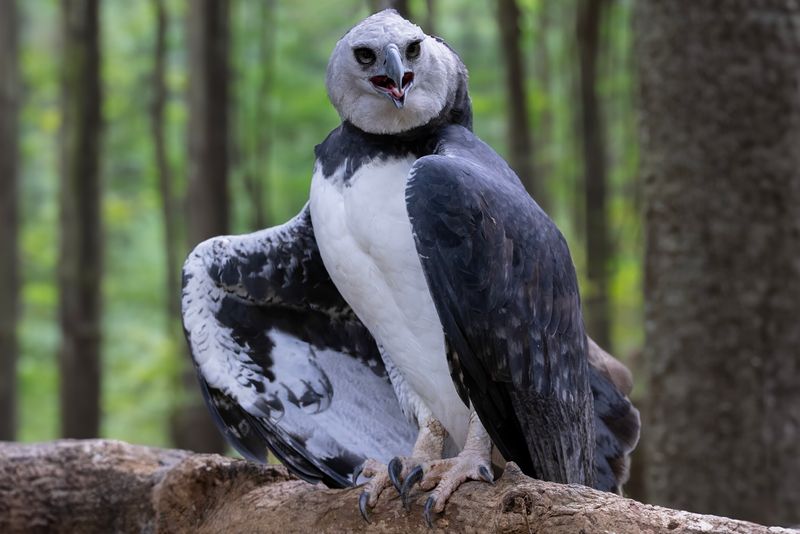
The harpy eagle, one of the largest and most powerful birds of prey, is a silent hunter of the jungle canopy.
With its formidable talons and sharp eyesight, it searches for monkeys and sloths, gliding through dense trees with broad wings that allow for agile maneuvering.
Unlike smaller birds, the harpy eagle can swoop down without a sound, using stealth to surprise its prey with rapid precision.
This silent attack is often over before the prey has a chance to react.
As solitary hunters and apex predators, harpy eagles play a crucial role in maintaining the balance of their ecosystem, proving that silence is a powerful weapon.
11. Crested Owl
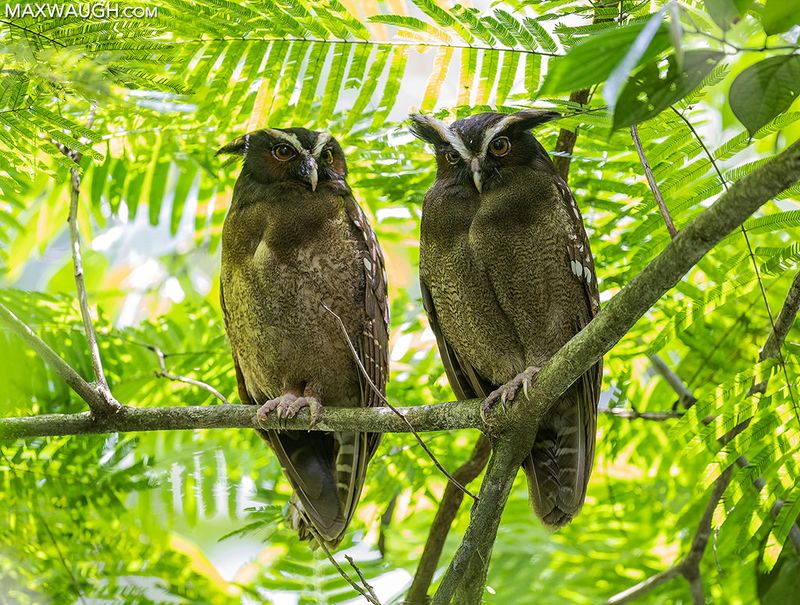
The crested owl, with its distinctive ear tufts and deep brown plumage, is a nocturnal predator of the jungle canopy.
Found in the rainforests of Central and South America, this owl excels at silent flight, allowing it to hunt under the cover of darkness.
Its acute hearing and excellent night vision help it locate prey like insects, small mammals, and birds, while its specially adapted flight feathers muffle the sound of its wing beats, making it nearly undetectable.
The owl’s silent approach ensures stealthy attacks, allowing it to swoop down with precision and capture its prey with sharp talons.
This ability to move without a sound not only aids in hunting but also helps the crested owl avoid detection by larger predators, ensuring its survival in the jungle.
12. Poison Dart Frog
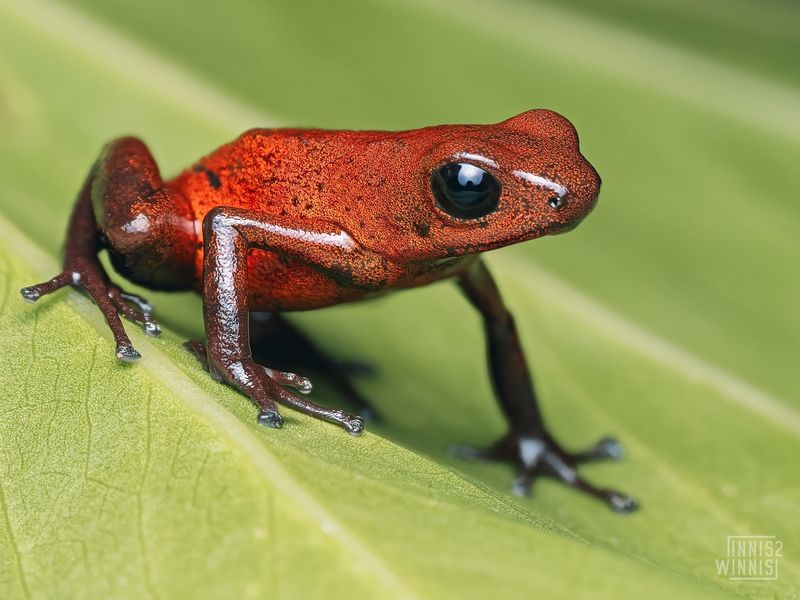
The poison dart frog may be small, but its vibrant colors and potent toxins make it a deadly predator.
Found in the rainforests of Central and South America, these frogs use their bold hues to warn off predators, yet their hunting approach is far more subtle.
Stealthy and agile, poison dart frogs rely on their silent movements to stalk small insects, which they capture with rapid precision using their sticky tongues.
Their nearly imperceptible hops from leaf to leaf help them avoid detection by both prey and predators.
Combining stealth with toxic skin, these frogs are formidable hunters, thriving in the jungle’s competitive ecosystem with their unique defense strategies.
13. Gaboon Viper
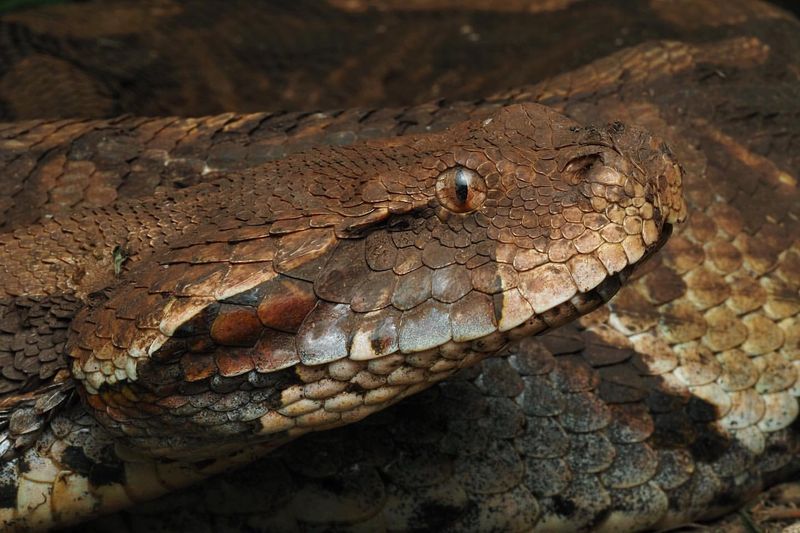
The Gaboon viper, with its striking pattern and robust body, is a master of camouflage in the rainforests and savannas of sub-Saharan Africa.
Its intricate scale pattern blends seamlessly with the leaf litter, allowing it to ambush prey undetected.
Known for its long fangs and potent venom, the Gaboon viper’s real strength lies in its silent approach—lying motionless for hours or even days, waiting for the perfect moment to strike.
When prey comes too close, it strikes with incredible speed, delivering a fatal bite with minimal movement.
This efficient hunting strategy makes the Gaboon viper one of the jungle’s most formidable predators, able to take down prey much larger than itself with ease.
14. Praying Mantis
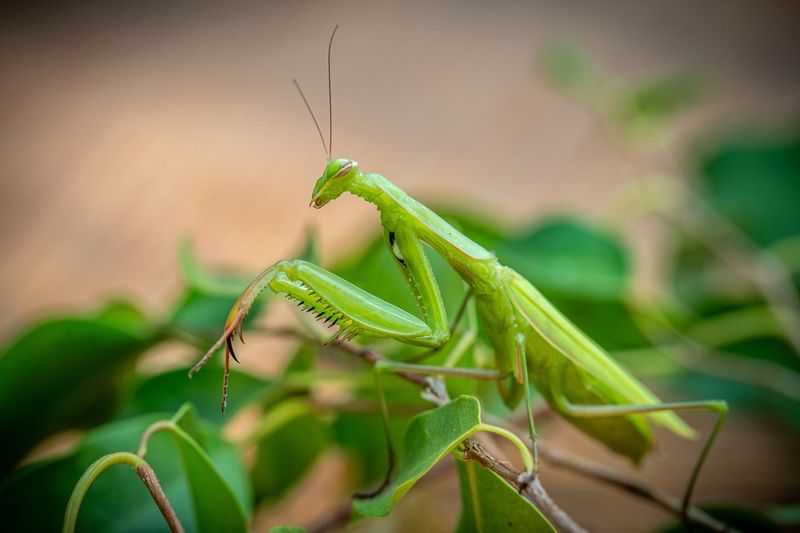
The praying mantis, with its distinctive stance and lightning-fast strikes, is a stealthy insect predator.
Found in tropical regions around the world, including the jungle, it blends seamlessly into its surroundings with green or brown bodies that mimic leaves and twigs.
Remaining motionless, the mantis waits for prey to come close, then strikes with incredible speed, extending its raptorial forelegs to snatch its victim before it even realizes the danger.
This silent approach allows the mantis to be a successful hunter, capturing food while also evading larger predators.
Its ability to move without a sound and strike swiftly is a key survival trait in the jungle, showcasing nature’s brilliance in predator evolution.
15. Bushmaster Snake
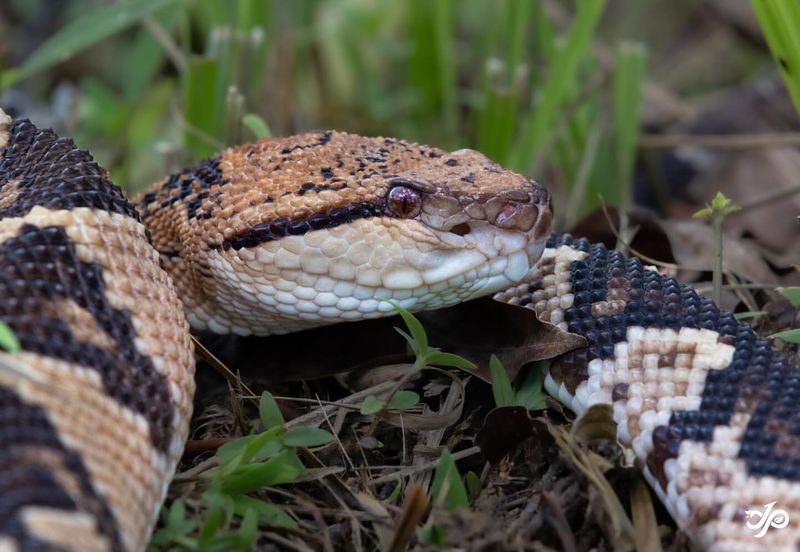
The bushmaster snake, one of the largest vipers in the world, is a formidable predator known for its stealth and lethal venom.
Found in the tropical forests of Central and South America, its cryptic coloration allows it to blend seamlessly with the leaf litter and underbrush, making it nearly invisible.
As an ambush predator, the bushmaster remains motionless for long periods, waiting for unsuspecting prey to come within striking range.
When the moment is right, it strikes with incredible speed, injecting a potent dose of venom.
This combination of patience, silence, and strength makes the bushmaster a top predator in the jungle, its silent menace lurking in the shadows.
16. Caiman
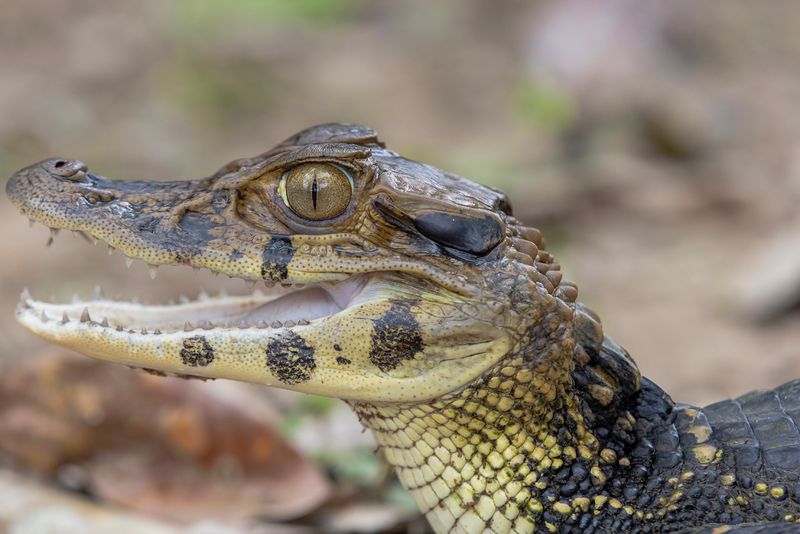
The caiman, a close relative of alligators and crocodiles, is a silent and patient predator in the jungle’s waterways.
Found in Central and South American rivers and wetlands, caimans remain nearly invisible by keeping only their eyes and nostrils above the surface.
Using ambush tactics, they can wait motionless for hours, conserving energy and avoiding detection.
Once prey such as fish, birds, or small mammals comes within reach, the caiman strikes with explosive speed, capturing it with powerful jaws.
This stealthy approach makes the caiman a formidable predator, playing a vital role in maintaining the balance of aquatic ecosystems.
17. Jaguar
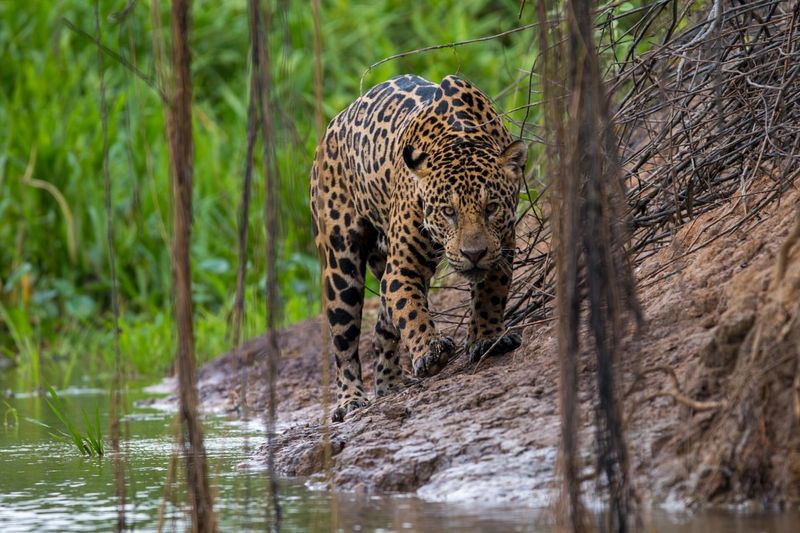
The jaguar is a master of stealth, blending seamlessly with the jungle’s dappled light thanks to its muscular build and rosette-patterned coat.
As the largest cat in the Americas, it relies on quiet movements and unmatched patience, stalking prey with careful precision.
Jaguars often hunt at night, using darkness to stay undetected, and their soft padded paws let them move silently over the underbrush.
Once within striking distance, the jaguar’s swift, powerful strike delivers a fatal bite, often piercing the skull of its prey.
This efficient hunting style, combined with its silent approach, helps the jaguar maintain its role as a keystone predator in its ecosystem.


